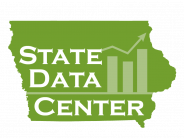About Census Data
Find out more about the different data sources used by the State Data Center:
American Community Survey (ACS)
The American Community Survey (ACS) is an ongoing survey that provides data every year -- giving communities the current information they need to plan investments and services. Information from the survey generates data that help determine how more than $400 billion in federal and state funds are distributed each year.
Boundary and Annexation Survey (BAS)
Accurate boundaries are essential for accurate population counts. Every year the Census Bureau's Boundary and Annexation Survey (BAS) updates the nation's inventory of counties, townships, and incorporated places.
Census Challenges
Governmental units may challenge the U.S. Census Bureau's population estimates and counts.
Census of Agriculture
Every five years the census of agriculture provides comprehensive statistics about agricultural operations, production, operators, and land use.
Census Tracts
Census tracts are small, relatively permanent statistical subdivisions of counties. Web look-up tools let you find census tract numbers for specific street addresses.
Certified Census Counts
Population counts used for official purposes must be certified by the U.S. Census Bureau and the Iowa Secretary of State.
New, Consolidated and Discontinued Cities
New, merged, and discontinued Iowa cities
Congressional Apportionment
Apportionment is the process of dividing up the 435 seats in the House of Representatives among the 50 states according to population.
Disclosure Avoidance and Differential Privacy
The Census Bureau has a long history of innovations in statistical protection. With each advance in data science they've applied better and stronger protections to keep the statistics we release anonymous.
Economic Census
Every five years the Census Bureau's economic census provides comprehensive statistics about the structure and functioning of the nation's economy.
Health Insurance
The Census Bureau collects health insurance data using three national surveys: the Current Population Survey's Annual Social and Economic Supplement (CPS ASEC), American Community Survey (ACS), and Survey of Income and Program Participation (SIPP).
Metropolitan and Micropolitan Statistical Areas
Every ten years the U.S. Office of Management and Budget (OMB) updates the standards for defining metropolitan areas. A list of qualified metropolitan and micropolitan statistical areas is released by OMB every year based on new population estimates.
North American Industry Classification System (NAICS)
NAICS is a system for classifying business establishments by type of economic activity to promote uniformity and comparability in the presentation and analysis of statistical data about the economy.
Population Estimates
Every year the Census Bureau produces population estimates for states, counties, and incorporated places.
Population Projections
Every ten years the Census Bureau produces population projections for states. The State Data Center also uses annual state and county projections produced by Woods & Poole Economics, Inc.
Poverty Statistics, Thresholds, and Guidelines
Every year the Census Bureau produces poverty estimates for states, counties, and school districts.
Race and Ethnicity Classifications
Race and ethnicity standards provide consistent and comparable data for an array of statistical and administrative programs, including census programs.
Redistricting Data Program and Iowa Redistricting
Small-area census population counts are used in Iowa to draw new boundaries for precincts and for congressional, legislative, supervisor, ward, and school board director districts.
Special Censuses
Local governments may ask the Census Bureau to conduct a special census in the years between decennial censuses. The certified results of a special census may be used to allocate state funds based on population.
Urban and Rural Classifications
The Census Bureau uses urban area criteria to create a single set of rules that yield consistent data and eliminate subjectivity in the delineation of urban areas.
